7 Entryway Scenting Tricks That Will Have Your Friends Saying "Wow, It Smells Great in Here"
Learn how to make your home more inviting by getting the frarance right, as soon as they walk through the door

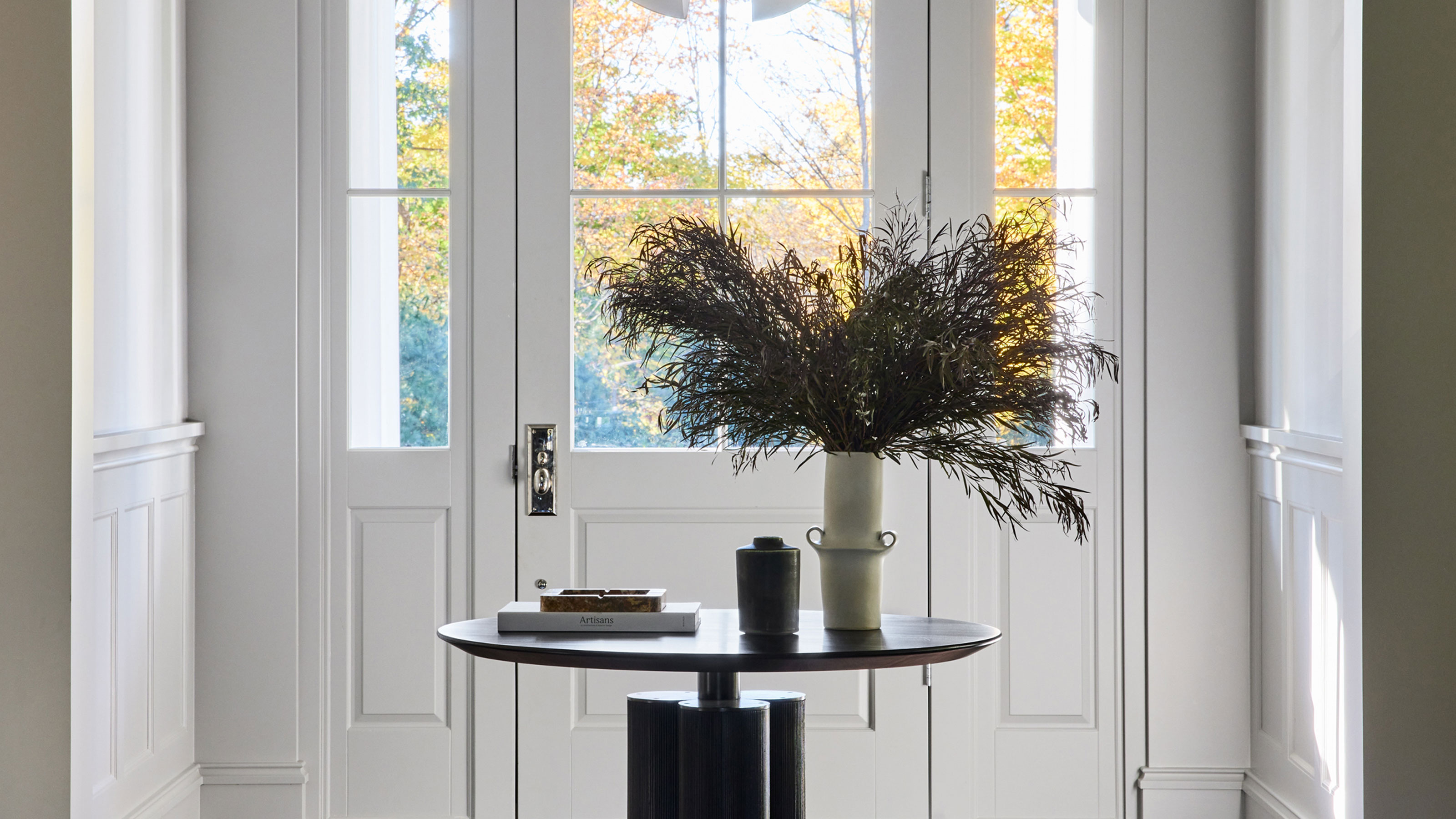
When it comes to creating a welcoming entryway, nothing sets the tone like a pleasant, inviting scent. Before your guest's eyes even adjust to the inside of your home, your entrance's fragrance is the first welcome your home gives, setting the tone for everything after.
But, you're working with a small space, and one that you're not actively spending a lot of time in, so you might not want to burn that scented candle in here (a house that's in the process of burning down sets a much worse first impression, trust us).
So what to do? Well, a very inviting fragrance is not about trying to eliminate smell altogether. In making your home smell good, we want to create a welcoming atmosphere that speaks of comfort, warmth, and care.
Here are seven tricks our experts recommend to achieve that perfect balance. These steps are practical, and straightforward, and ensure that you and your guests feel at home the moment they step inside.
1. Clean and declutter the space
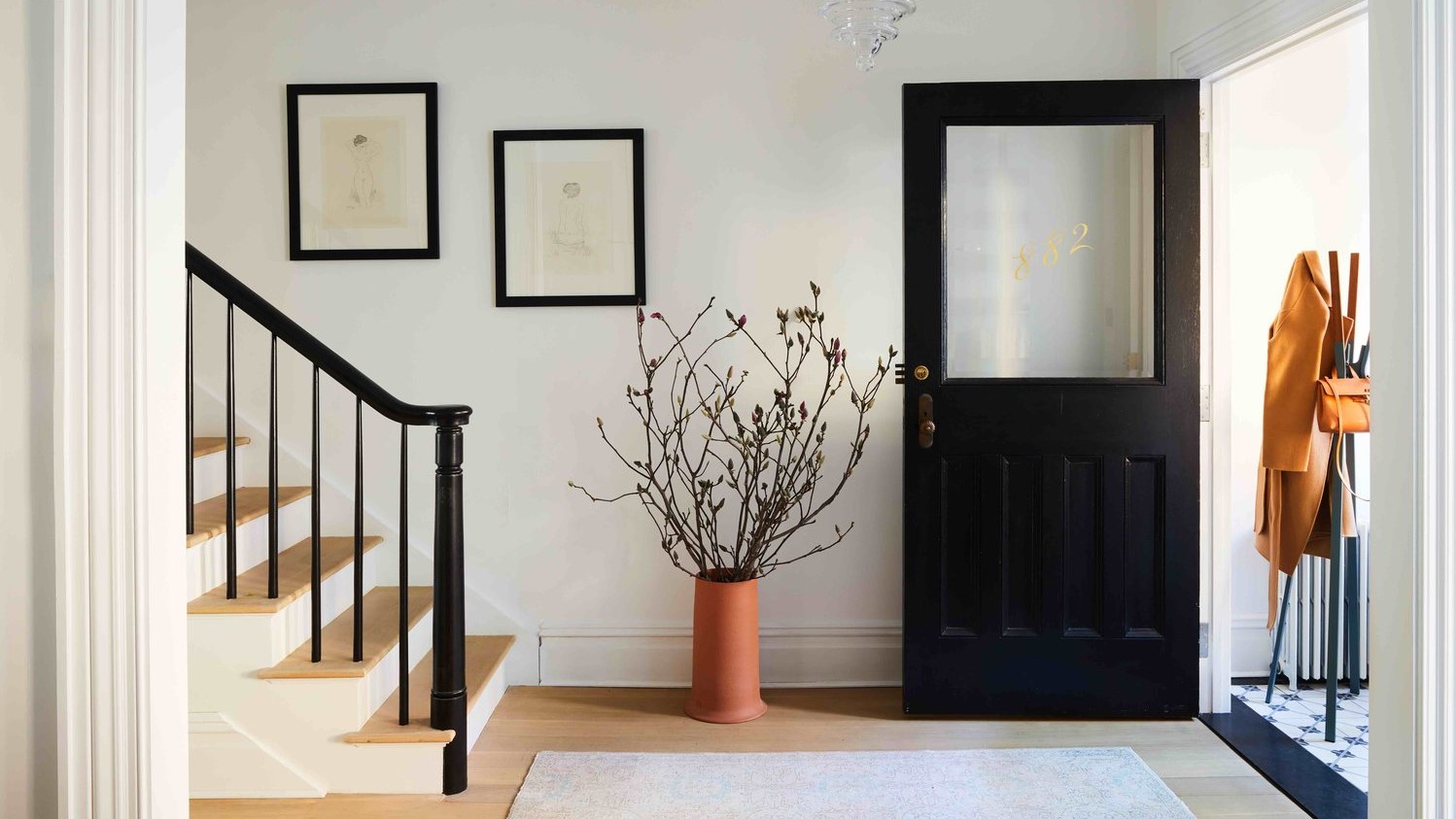
“To make an entryway smell welcoming, it's crucial to begin with a clean and clutter-free space,” says Karina Toner, a cleaning expert at Spekless Cleaning. “Regularly dust and vacuum the area to eliminate dust and dirt that can harbor odors. Wipe down surfaces like tables, shelves, and doorframes to ensure they're free of grime and fingerprints.”
Clear out any unnecessary items that might be contributing to unpleasant smells, such as old shoes or damp umbrellas and organize them away in the correct entryway storage.
2. Use scented candles strategically

If you've got an entryway you can keep an eye on, place a high-quality scented candle on a console table or a nearby shelf. Opt for candles with subtle yet refreshing fragrances like vanilla, lavender, or citrus. Light the candle about 15-20 minutes before expecting guests to let the scent gently disperse.
The Livingetc newsletters are your inside source for what’s shaping interiors now - and what’s next. Discover trend forecasts, smart style ideas, and curated shopping inspiration that brings design to life. Subscribe today and stay ahead of the curve.
For a flameless option, choose a candle warmer, like this one from Walmart that will release the scent without an open flame. Pro tip? Choose candles with soy wax bases for a cleaner burn and longer-lasting scent.
3. Incorporate essential oil diffusers
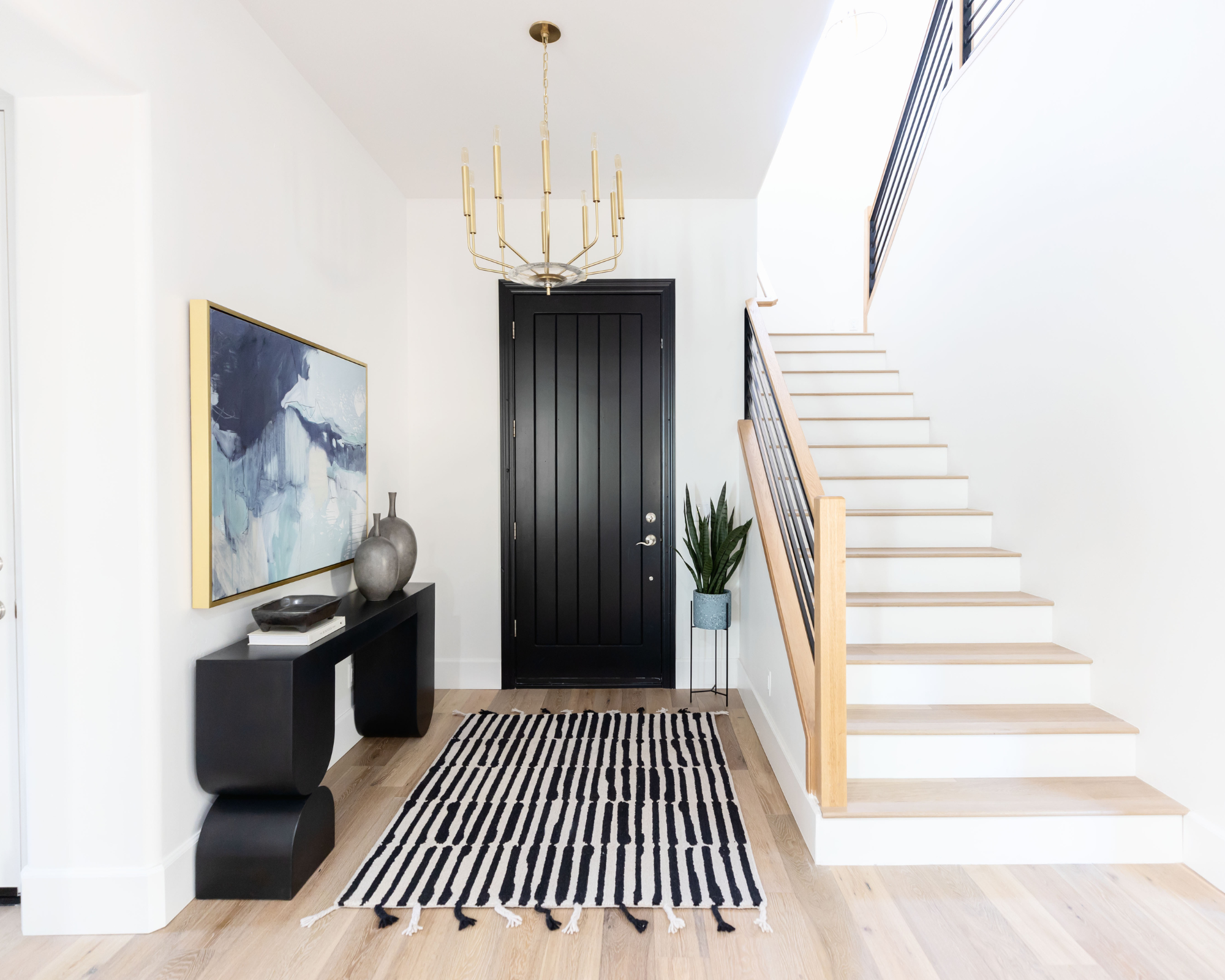
Essential oil diffusers are a safe and effective way to introduce natural scents into your entryway. Select oils known for their calming properties, such as eucalyptus, lemongrass, or bergamot which can be combined for aromatic scent layering.
Fill the diffuser such as this Essential Oil Diffuser from Amazon with water, add 4-5 drops of your chosen oil, and let it run for a few hours before guests arrive.
4. Create a scented welcome mat
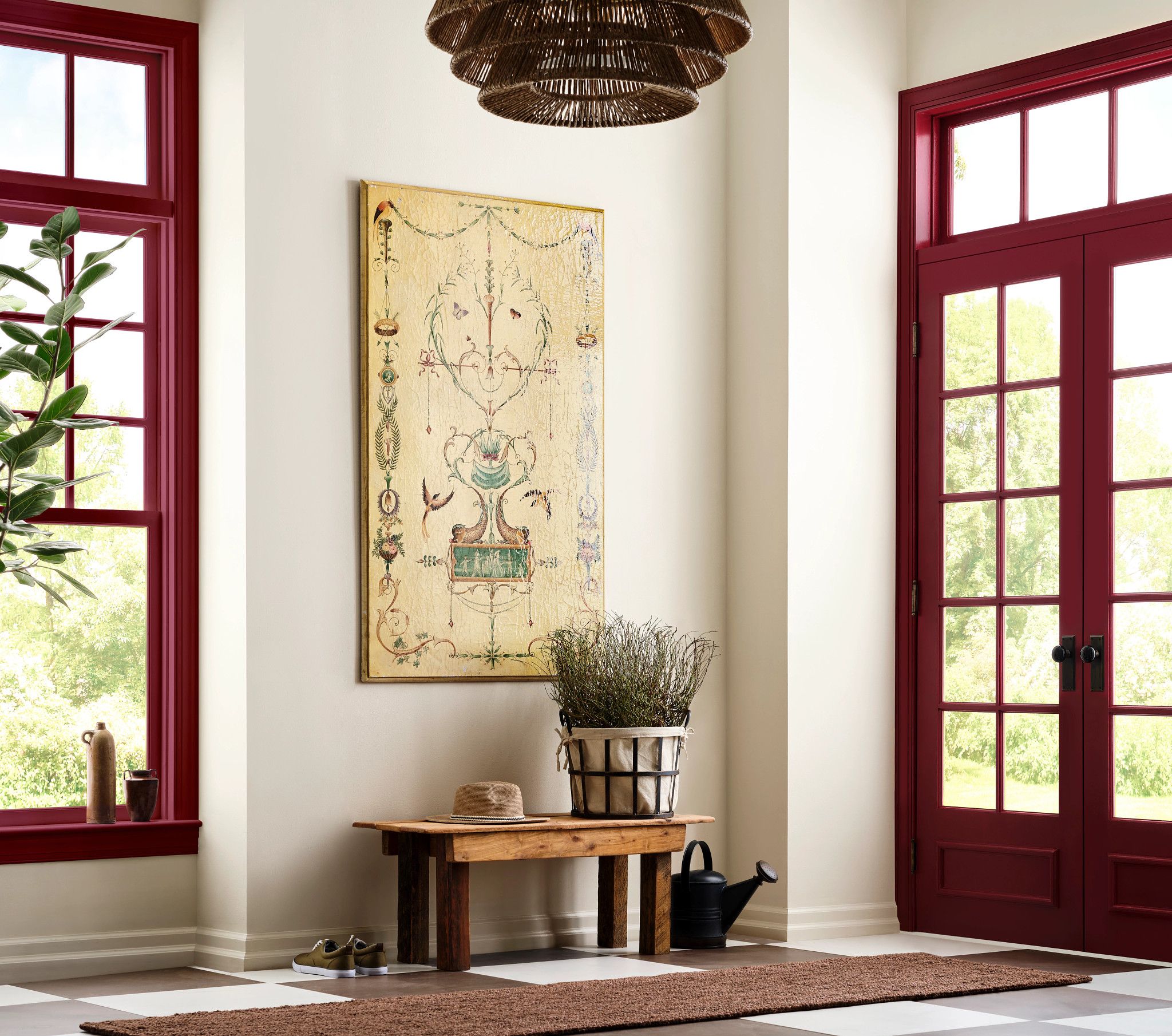
“Mats and rugs placed at entryways are often the first line of defense against tracking in dirt and debris. However, they can also hold onto odors, especially if not regularly cleaned,” says cleaning expert Prerna Jain. “Be sure to vacuum or shake out any mats or rugs on a weekly basis and wash them as needed. This will not only keep your entryway smelling fresh but also help prolong the life of your flooring.”
Prerna recommends that you take your cleaning one step further and create a scented welcome mat by choosing one with a textured surface and spray it lightly with a fabric-friendly scent, such as Method All Purpose Natural Surface Cleaning Spray (available from Amazon), which is scented with clementine. You can also infuse it with a few drops of essential oil mixed with water in a spray bottle. Every time someone steps on the mat, the scent will be released, adding an aromatic layer to your entryway.
Want the step-by-step?
1. In a spray bottle, mix 1 cup of water with 8-10 drops of essential oil.
2. Lightly spray the mat, ensuring it’s not soaked.
3. Let it dry for about 15 minutes before placing it outside.
5. Add scented sachets in coat closets
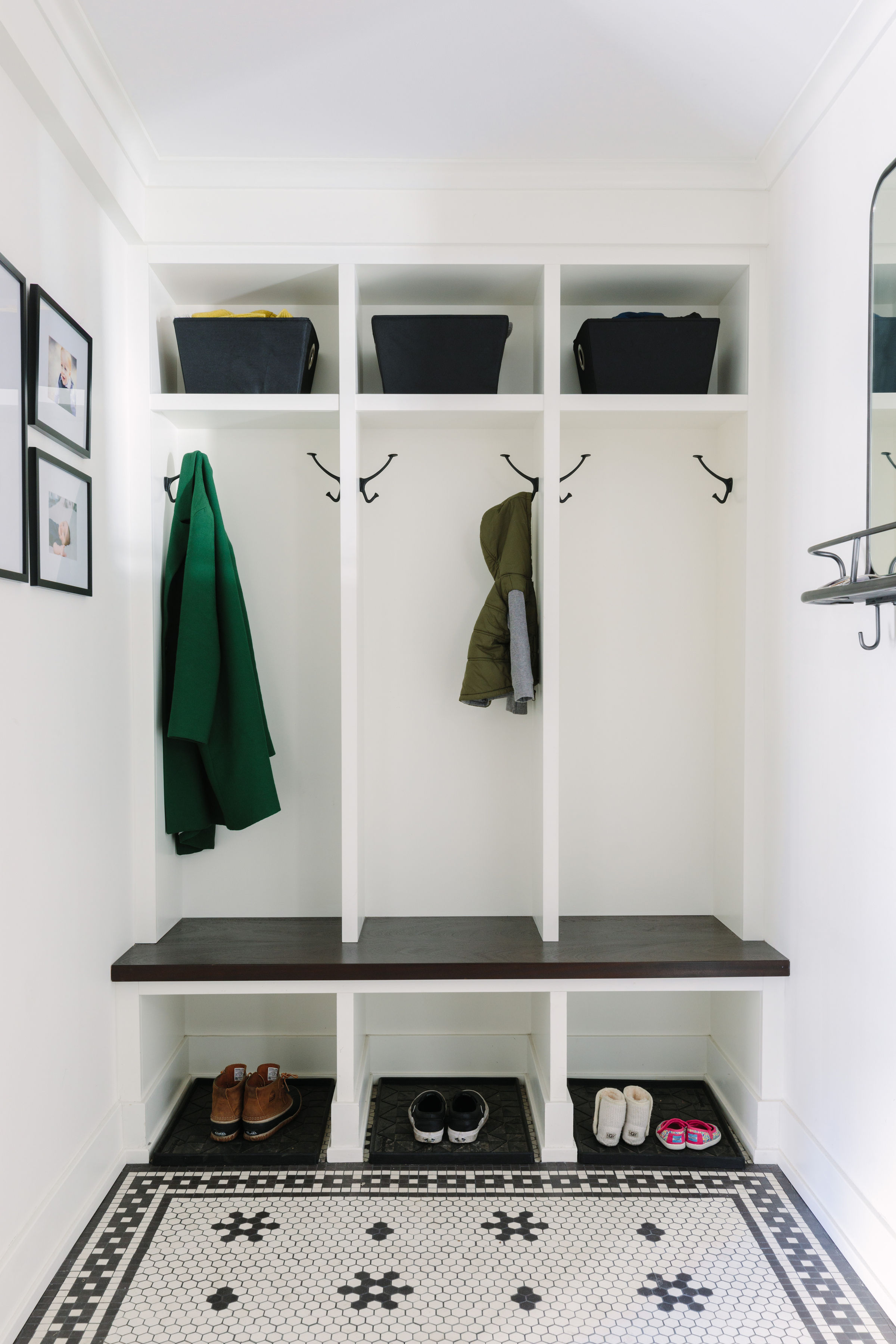
If your entryway has a coat closet, New York-based professional organizer Amanda Wiss, founder of Urban Clarity suggests adding a few scented sachets or cedar blocks inside will help keep the space fresh and pleasant. “Cedar not only smells great but also helps repel moths and pests,” says Amanda. “Hang one sachet on the closet rod and place another in a coat pocket.” You can find scented cedar blocks on Amazon.
Replace sachets every 4-6 weeks to maintain the fragrance and is a common practice that people with amazing smelling closets do.
6. Place fresh flowers or potpourri bowls
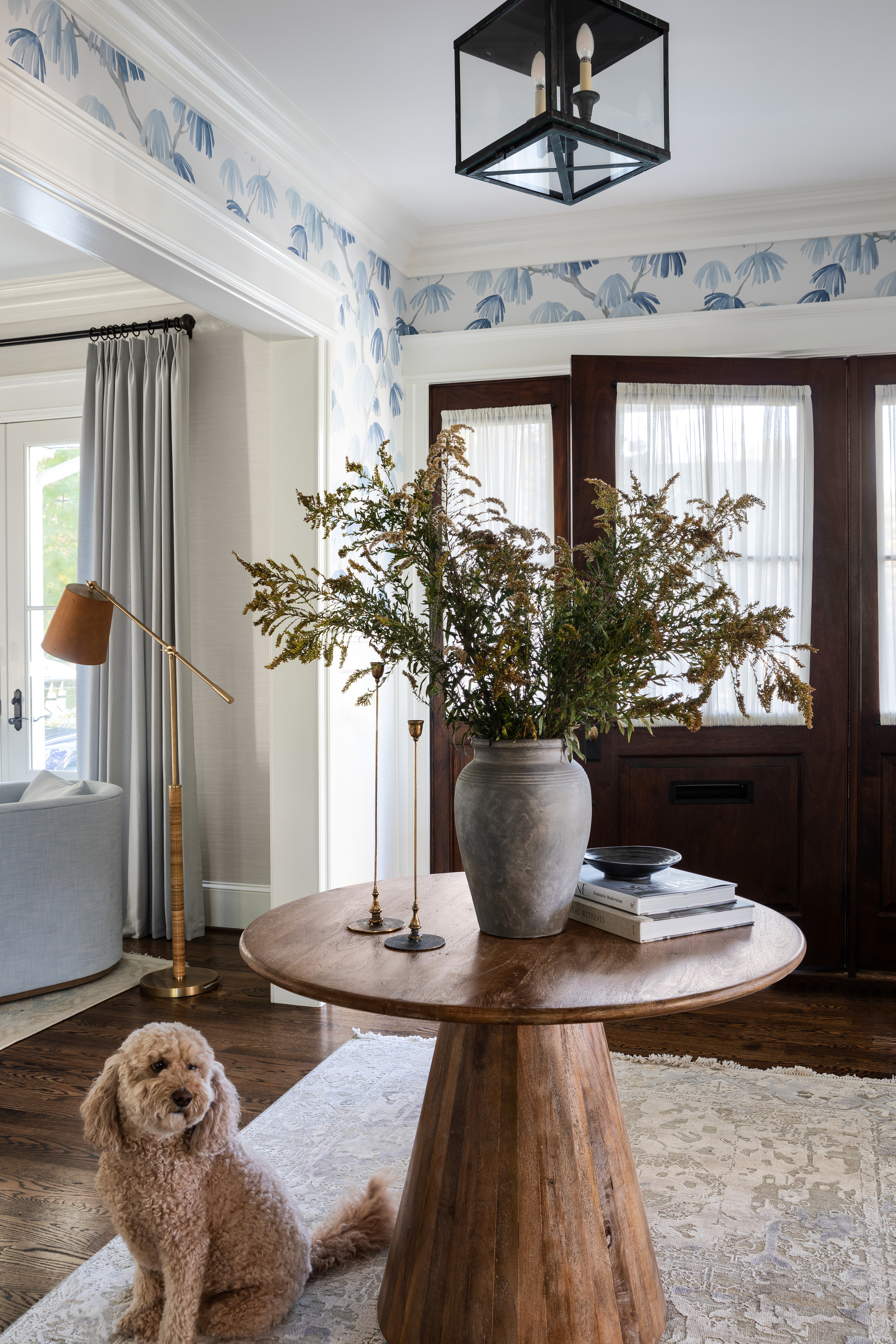
Fresh flowers add visual appeal and bring natural fragrance into the home. Choose fragrant flowers like roses, lilies, or eucalyptus branches for a great-smelling bouquet. Also you can fill a decorative bowl with potpourri and place it on an entryway table. Stir the potpourri every few days to release the scent.
Trim the flowers and arrange them in a vase with fresh water. For potpourri, add a few drops of essential oil to the bowl and mix gently. Place the flowers or potpourri in the entryway and replace flowers weekly for freshness.
“Alternatively, try using citrus fruits instead of flowers in your potpourri,” suggests Fred McGill, a home improvement expert. “Citrus fruits like lemons, limes, and oranges are known for their refreshing scents and can be used effectively in making an entryway smell more inviting.”
According to Fred, start by cutting up some slices of your favorite citrus fruit and place them in a bowl or vase near the entryway. You can also use the peels to make a natural air freshener by boiling them in water with cinnamon sticks and cloves.
7. Utilize DIY Reed Diffusers
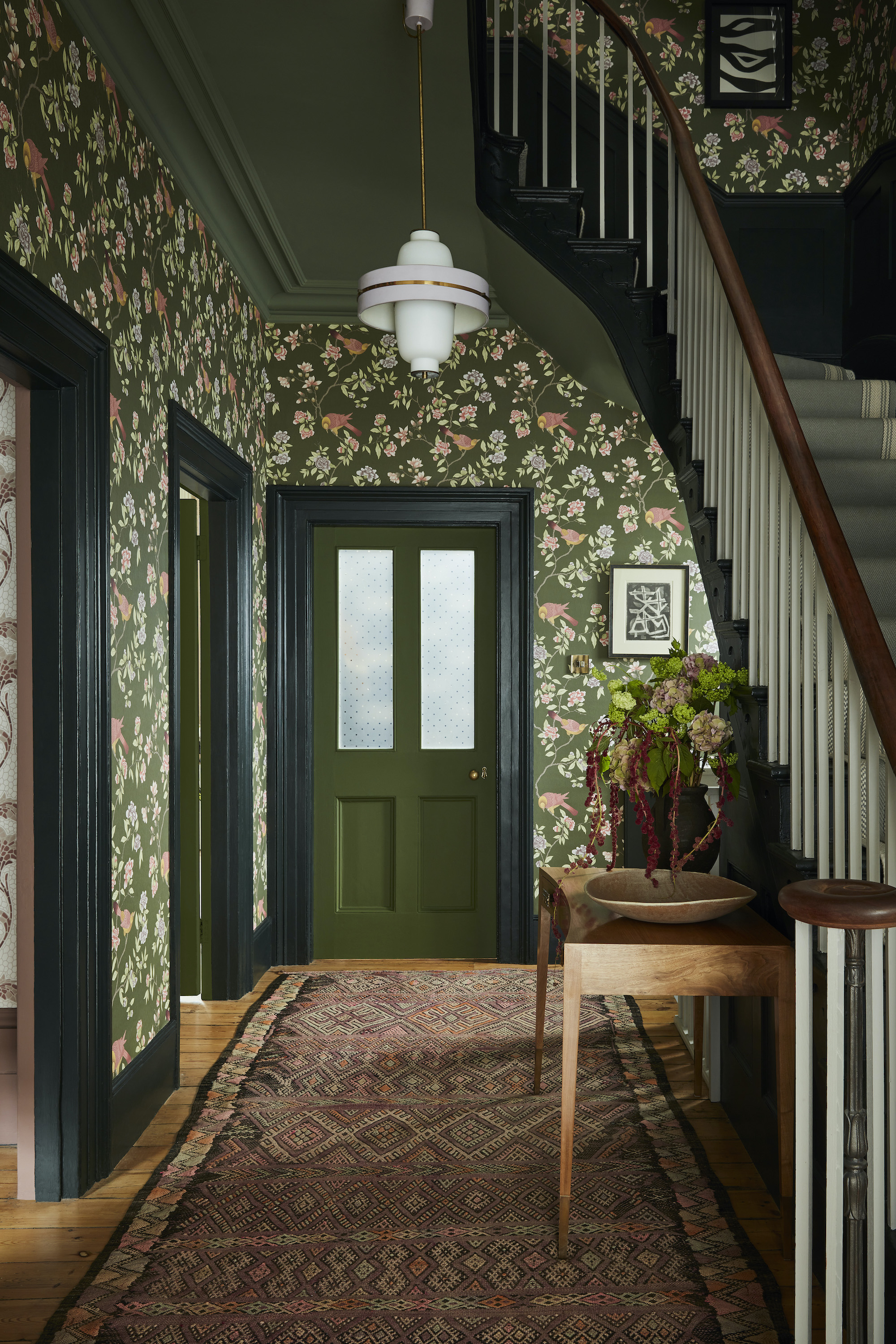
Reed diffusers are a chic and easy way to add fragrance without requiring heat or electricity. You can make your own by combining ¼ cup of a carrier oil (like almond oil) with 10-15 drops of your favorite essential oil. Insert reed sticks, which you can buy from Walmart, and place the jar on a shelf or console table.
Mix the oils in a small glass bottle or jar. Insert 6-8 reed sticks and let them absorb the oil for an hour. Flip the sticks to help the scent disperse, and repeat flipping weekly.
FAQs
How do you eliminate smells in an entryway?
Aside from baking soda and vinegar, some of the best odor eliminators include coffee grounds, tea, and oats, providing you with more options over using commercial cleaning agents.
To make a lasting impression, choose a fragrance that is inviting and welcoming, as the scent of your entryway sets the tone for the rest of your home. Popular scents for entryways include citrus, which offers a fresh and invigorating aroma, lavender, known for its calming and soothing properties, and vanilla, which provides a warm and comforting scent.
By incorporating these methods, your entryway will always feel warm and welcoming, leaving a lasting impression on everyone who walks through your door. A pleasant scent is an underrated but powerful aspect of home design—it can transform the mood of your space without much effort.

Seraphina is a contributing editor at Livingetc, writing Advice features on design, renovation and organisation. Seraphina is a qualified Interior Designer from KLC School of Design having worked at London-based interior design agencies Anouska Hempel and ND Studios. Seraphina has also completed her MA degree in Magazine Journalism at City, University of London, with previous experience including writing for Homes & Gardens, Women's Health, Food & Travel and Fabulous Magazine.